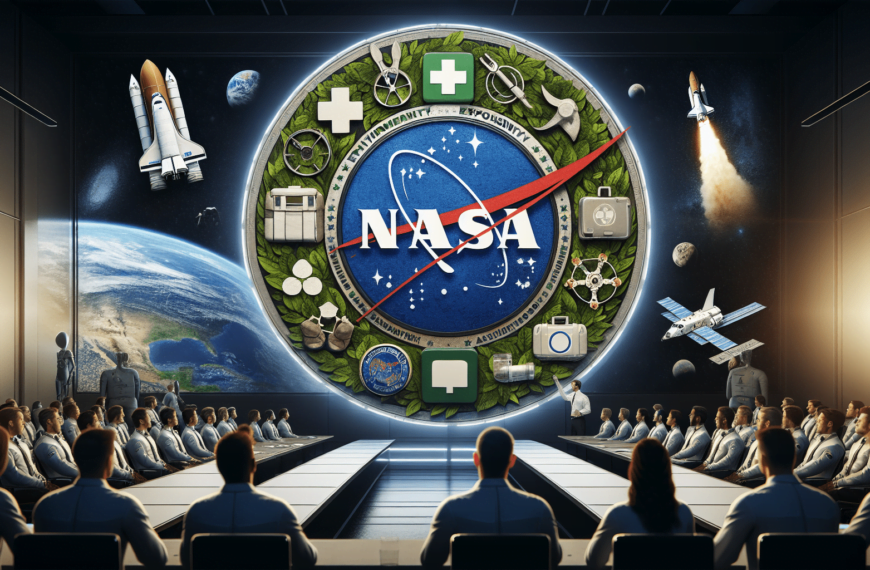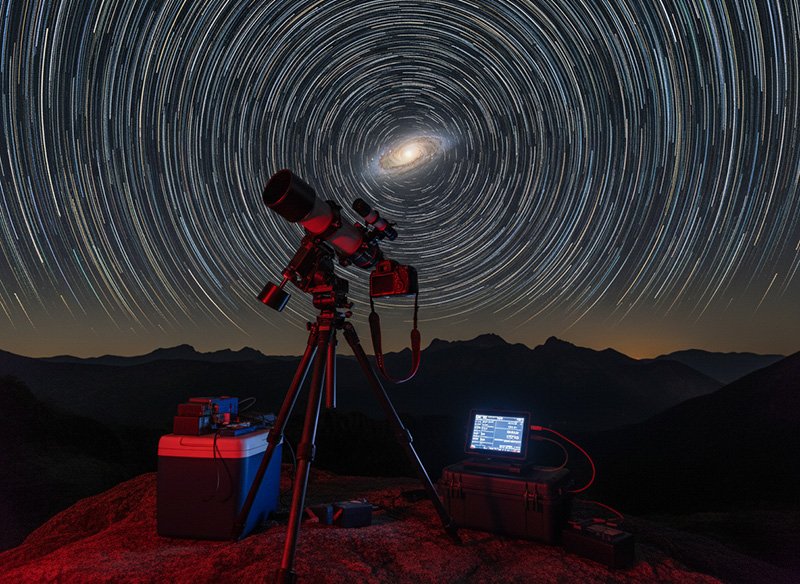China is unveiling a roadmap for space science focused on black holes, dark matter, dark energy, habitable exoplanets, and laws of the universe.
Key Takeaways 📝
- Bold Vision for Space Science: China’s new roadmap aims to tackle the mysteries of black holes, dark matter, dark energy, habitable exoplanets, and the fundamental laws of the universe, positioning the country as a leader in global space exploration.
- Groundbreaking Missions Ahead: Key missions like the Enhanced X-ray Timing Polarimetry Observatory and Earth 2.0 aim to provide unprecedented insights into extreme cosmic phenomena and identify potentially habitable worlds beyond our solar system.
- International Collaboration Emphasis: Recognizing space exploration as a global endeavor, China plans to enhance international cooperation, building on existing partnerships and fostering new collaborative projects.
- Real-World Applications of Space Science: Discoveries from these missions have the potential to drive technological advancements and inspire future generations to pursue careers in STEM fields, influencing education and innovation worldwide.
- Understanding Our Universe: By exploring fundamental questions about the universe’s composition and behavior, China’s initiatives promise to reshape our understanding of physics and the potential for extraterrestrial life.
In an exciting development for space science, China is set to unveil an ambitious long-term vision that aims to delve into some of the most profound mysteries of the universe. The Chinese Academy of Sciences (CAS) has meticulously crafted a roadmap to guide future missions, focusing on five main scientific themes: black holes, dark matter, dark energy, habitable exoplanets, and the laws of the universe. This plan, known as “One Black Two Dark Three Origins Five Characterizations,” represents a significant step forward in China’s quest to solidify its role in global space science.
The Roadmap: One Black Two Dark Three Origins Five Characterizations
At the heart of this long-term vision are several groundbreaking scientific themes that promise to expand our understanding of the cosmos. These themes are:
- Black Holes: Exploring the enigmatic nature of black holes.
- Dark Matter: Investigating the elusive dark matter that makes up a significant portion of the universe.
- Dark Energy: Understanding dark energy and its role in the universe’s expansion.
- Habitable Exoplanets: Searching for potentially habitable planets beyond our solar system.
- Laws of the Universe: Studying the fundamental laws governing matter and life in space.
These themes are further encapsulated in the roadmap’s guiding principle: “One Black Two Dark Three Origins Five Characterizations.” This principle emphasizes the study of dense celestial bodies (black holes), dark matter, dark energy, the origin of the universe, the solar system, and life, as well as characterizing various systems like the near-Earth system, Earth-moon system, solar system, and extra-solar system.
Key Missions Under the Roadmap
To achieve its ambitious goals, CAS has outlined several key missions that will play a pivotal role in advancing space science by 2030. These missions include:
1. Enhanced X-ray Timing Polarimetry (eXTP) Observatory
The eXTP mission is designed to be an X-ray observatory capable of high-resolution timing and polarimetry observations. It aims to study dense celestial bodies like black holes and neutron stars, thereby enhancing our understanding of multi-messenger astronomy. By observing these extreme environments, eXTP will provide valuable insights into the behavior of matter under intense gravitational forces.
2. Discovering Sky at the Longest Wavelengths (DSL) Spacecraft
The DSL mission involves a fleet of 10 spacecraft that will operate in lunar orbit, using the Moon as a shield to block Earth’s electromagnetic interference. This unique positioning will allow the spacecraft to detect ultra-long wave signals from the early universe, providing insights into the universe’s “dark age.” These observations could shed light on the formation and evolution of cosmic structures during this mysterious epoch.
3. Earth 2.0 (ET) Observatory
Scheduled for launch in 2028, the Earth 2.0 observatory will be positioned at the Earth-Sun Lagrange point 2 (L2). Its primary objective is to conduct long-term surveys for Earth-like habitable exoplanets. By identifying potentially habitable worlds beyond our solar system, ET aims to answer one of humanity’s most profound questions: Are we alone in the universe?
4. Solar Polar-orbit Observatory (SPO)
The SPO mission will involve a spacecraft orbiting at a high inclination to observe the Sun’s poles. By studying the Sun’s magnetic activity and the origin of high-speed solar winds, SPO will provide crucial data for understanding space weather and its impact on Earth. This mission will also contribute to our knowledge of solar dynamics and their influence on the heliosphere.
5. Taiji-2 Constellation
Taiji-2 is a three-satellite constellation that will operate in a heliocentric orbit with a 3-million-kilometer baseline. Its primary goal is to detect millihertz gravitational waves, advancing our understanding of space-time and gravity. By measuring these subtle ripples in space-time, Taiji-2 will contribute to the burgeoning field of gravitational wave astronomy.
Accelerating Progress in Space Science
The Chinese Academy of Sciences is not just aiming for incremental progress; it seeks to accelerate advancements in space science by 2030. This ambitious timeline reflects China’s commitment to becoming a major player in global space exploration. The selected missions under this roadmap are designed to deliver major discoveries and push the boundaries of our current knowledge.
One notable aspect of this long-term vision is its emphasis on international collaboration. Recognizing that space exploration is a global endeavor, CAS is committed to initiating and participating in international cooperation projects. This approach builds on existing collaborations, such as the Einstein Probe mission with the European Space Agency (ESA) and the upcoming SMILE mission.
Future Missions: Chang’e-7 and Tianwen-2
In addition to the key missions outlined in the roadmap, China has several other exciting missions planned that will contribute to its overall vision for space science.
Chang’e-7 Lunar Landing Mission
Scheduled for 2025, Chang’e-7 aims to explore the lunar south pole, an area of significant interest due to its potential water ice deposits. This mission will involve a lander, rover, and orbiter working in tandem to study the lunar surface and its resources comprehensively. The data gathered from Chang’e-7 could pave the way for future lunar exploration and even potential human missions.
Tianwen-2 Near-Earth Asteroid Sample Return Mission
Tianwen-2 is an ambitious mission that seeks to collect samples from a near-Earth asteroid and return them to Earth for analysis. This mission will also involve exploring a main-belt comet, providing valuable insights into the early solar system’s formation and evolution. By studying these celestial bodies up close, scientists hope to unlock clues about the building blocks of our solar system.
The Importance of Space Science
Space science is not just about exploring distant worlds; it has profound implications for our understanding of fundamental physics, planetary science, and even life itself. The study of black holes, dark matter, and dark energy can reveal new insights into the nature of gravity, the composition of the universe, and its ultimate fate. Searching for habitable exoplanets can help us understand the conditions necessary for life and potentially identify other worlds where life might exist.
Moreover, space science drives technological innovation and fosters international collaboration. The development of advanced spacecraft, telescopes, and detectors pushes the boundaries of engineering and technology. Collaboration with international partners enhances scientific research by pooling resources, expertise, and data.

China’s long-term vision for space science represents a bold and ambitious step forward in our quest to understand the universe’s mysteries. With a well-defined roadmap focusing on black holes, dark matter, dark energy, habitable exoplanets, and the laws of the universe, China aims to accelerate progress in space science by 2030. The key missions outlined under this plan—eXTP, DSL, Earth 2.0, SPO, and Taiji-2—promise to deliver groundbreaking discoveries that will reshape our understanding of the cosmos.
By emphasizing international collaboration and planning future missions like Chang’e-7 and Tianwen-2, China is positioning itself as a major player in global space exploration. As we look to the future, it is clear that space science will continue to be a driving force behind technological innovation and our quest for knowledge about the universe.
In this new era of accelerated development, China’s long-term vision for space science holds great promise for advancing our understanding of space and its myriad mysteries. As we embark on this exciting journey, we can look forward to a future filled with groundbreaking discoveries and unprecedented exploration.
The Road Ahead: Challenges and Opportunities
While China’s long-term vision for space science is undoubtedly ambitious, it is not without its challenges. The complexities involved in designing and executing these missions require significant investment in research and development. Furthermore, ensuring reliable communication between spacecraft and ground stations is crucial for mission success. Despite these challenges, China’s commitment to space science demonstrates its determination to overcome obstacles and achieve its goals.
One area where China has shown remarkable progress is in its ability to develop cutting-edge technology required for these missions. For instance, advancements in X-ray timing polarimetry technology have enabled eXTP to observe celestial bodies with unprecedented precision. Similarly, innovations in radio astronomy have made DSL’s detection of ultra-long wave signals possible.
Another challenge lies in fostering international collaboration amidst geopolitical tensions. While scientific cooperation has historically transcended political boundaries, maintaining productive partnerships requires diplomatic finesse. China’s willingness to engage with international partners signals its recognition of space exploration as a global endeavor that benefits all humankind.
The Impact on Future Generations
China’s long-term vision for space science will have far-reaching implications for future generations. By investing in space exploration today, China is laying the groundwork for advancements that will shape humanity’s future. Discoveries made through these missions can inspire young scientists and engineers worldwide to pursue careers in STEM fields.
Moreover, understanding phenomena like dark matter and dark energy can revolutionize our comprehension of fundamental physics principles taught in classrooms worldwide. The search for habitable exoplanets can ignite curiosity about astrobiology among students who may one day contribute to discovering life beyond Earth.
As we stand on this threshold of unprecedented exploration into deep space mysteries—black holes’ enigma or dark matter’s secrets—we must acknowledge how integral international collaboration remains toward achieving these lofty goals effectively without compromising quality standards set by CAS’s visionary leadership team spearheading efforts towards realizing “One Black Two Dark Three Origins Five Characterizations.”
In conclusion: China’s unveiling long-term vision not only marks an exciting chapter but also underscores their dedication towards pushing boundaries further than ever before seen within realm(s) encompassing scientific endeavors focused primarily around uncovering hidden truths embedded deep within vast expanses surrounding us all collectively known simply yet profoundly stated – ‘space.’
























